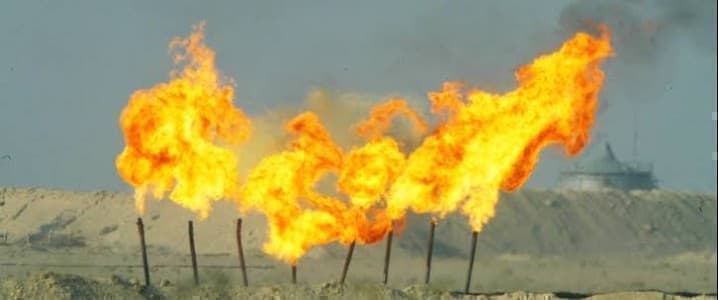Climate modeling in recent years indicates that it is still hypothetically possible to limit global warming to no more than 1.5 °C--the level sought by the Paris Agreement--even given currently committed fossil-fuel-emitting infrastructure as long as no new fossil-fuel-emitting infrastructure is built. The Intergovernmental Panel on Climate Change concurs with this view, with the IPCCs Sixth Assessment Report calling for “...no investment in new fossil fuel supply projects”.
Unfortunately, the global energy crisis triggered by the pandemic as well as Russia’s war in Ukraine has highlighted the world’s inextricable relationship with fossil fuels, meaning the IPCC utopia is unlikely to be realized. Indeed, no less than seven major oil and gas projects have been unveiled worldwide since that report came out a year ago as nations intensify their pursuit of energy security. Another dilemma--the fast pace of transition to renewable sources only appears to be adding to the total energy supply but is not doing much to displace oil and gas demand to any appreciable degree.
At this point, it’s more realistic to try and pursue oil and gas projects that have a less negative impact on the environment–which makes this report more interesting. A first-of-its kind analysis by the nonprofit Rocky Mountain Institute has looked at greenhouse-gas emissions across entire supply chains and found that oil and natural gas fields in Russia, Turkmenistan and Texas are the worst polluters on our planet. According to the report, the dirtiest fields emit more than 10 times as much CO2 equivalent as the least emissions-intensive sites. The study looked at 135 global oil- and gas-producing resources–accounting for half of the world’s supplies–based on a full life-cycle analysis of their 2020 emissions. Related: Citi Doesn’t See $100 Oil Despite Shock OPEC+ Cuts
Gazprom’s Astrakhanskoye natural gas field was found to be the worst offender with the biggest footprint thanks to prolific leaks on its pipelines and other downstream infrastructure. Turkmenistan’s South Caspian basin is the second worst polluter while the Permian Basin in West Texas ranks third with the majority of their emissions coming from upstream production.
The report concludes that significant fossil-fuel emissions occur directly at the wellhead and during processing, refining, and transportation and not just at the point of combustion.
Oil-Climate Index Dirtiest & Cleanest
There are other tools that you can use to compare the carbon and greenhouse gas emissions of different oil fields. The Oil-Climate Index (OCI) says it relies on consistent, comparable, and verifiable open-source data on crude oils, including oil assays that are reported out in a specified format. Going by the OCI, Canadian Oil Sands with their heavy, bituminous crude are some of the dirtiest oil and gas fields in the business.
According to the Oil Climate Index, Canada’s Athabasca DC SO in Alberta Province has the highest GHG emissions at 736 kg CO2 equivalent for every barrel extracted. The oil field produces 144,000 barrels of oil equivalent per day. This field produces extra-heavy, high-sulfur bitumen that is upgraded into a medium, sweet synthetic crude oil (SCO) before transport to the refinery. A DC (delayed coker) unit produces petcoke, which is used to upgrade this oil, with high heat and hydrogen associated with its refining. These processes make Athabasca DC SCO the most emissions intensive of all current sample oils on the Oil Climate Index.
From some perspective, the largest oil field on the OCI, Saudi Arabia’s Ghawar, emits 491 kg CO2 equivalent per barrel. Ghawar produces 5,000,000 barrels of oil equivalent per day. According to the OCI, Ghawar’s relatively low GHG emissions can be chalked up to a combination of low upstream extraction emissions, low energy intensity during refining, and low end-product combustion emission.
California’s Midway Sunset is the United State’s dirtiest oil field, producing 725 kg of CO2 equivalent per barrel. Midway Sunset produces a sour, watery oil whose gravities range from medium to extra-heavy. It’s one of the country’s oldest and largest fields in the San Joaquin Valley and has been in production for 120 years. Midway Sunset’s high GHG emissions are large due to the high volume of steam injected into the reservoir to loosen and allow oil to flow, as well as the high water content in the wells meaning that extra energy is required to pump it out of the ground.
On the opposite side of the spectrum, Texas Eagle Ford Volatile Oil Zone is one of the cleanest in the world, producing just 458 kg of CO2 equivalent per barrel. This field produces an ultra-light, sweet oil with production zones ranging from oil to gas. This oil zone exists in a gaseous phase while under pressure in the reservoir and has a higher gas-to-oil ratio than other resources from this play.
The U.S. Wyoming, Bakken No Flare and Texas Eagle Ford Black Oil Zone are also among the cleanest, with GHG emissions of 467 kg, 471 kg and 477 kg of CO2 equivalent per barrel, respectively. The Wyoming field produces a light, sweet oil from the Niobrara play in central Wyoming, with a high gas-to-oil ratio. Although the field’s venting and flaring emissions are high, they are offset in part by natural gas that is captured upstream and exported.
OCI says that Bakken No Flare’s upstream GHG emissions are low when the associated gas is well-managed and not flared or otherwise released. The field’s ratio of carbon to hydrogen is also relatively low while its refining and combustion emissions are likewise relatively low.
The Texas Eagle Ford Volatile Oil Zone also produces a light, sweet oil with production zones ranging from oil to gas. The Eagle Ford’s moderate gas-to-oil ratio leads to moderate levels of GHG emissions mainly from venting and flaring.
By Alex Kimani for Oilprice.com
More Top Reads From Oilprice.com:
- OPEC+ Cut Makes Oil Balance Look “Insanely Bullish” For Later This Year
- PetroChina Sees Chinese Fuel Demand Rising By 3% From Pre-Covid Levels
- Tesla Smashes Q1 Delivery Record Thanks To Price Cuts

















